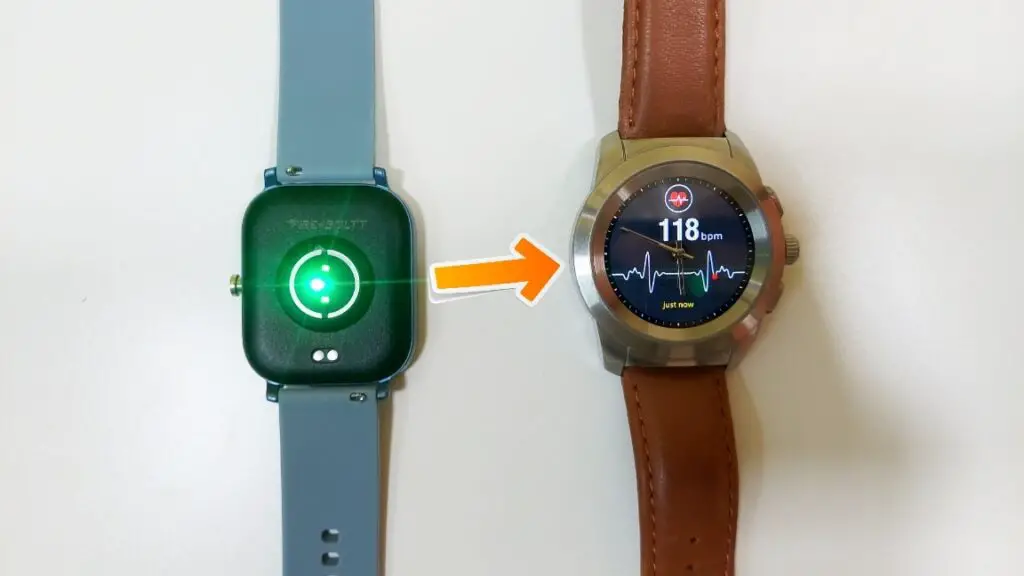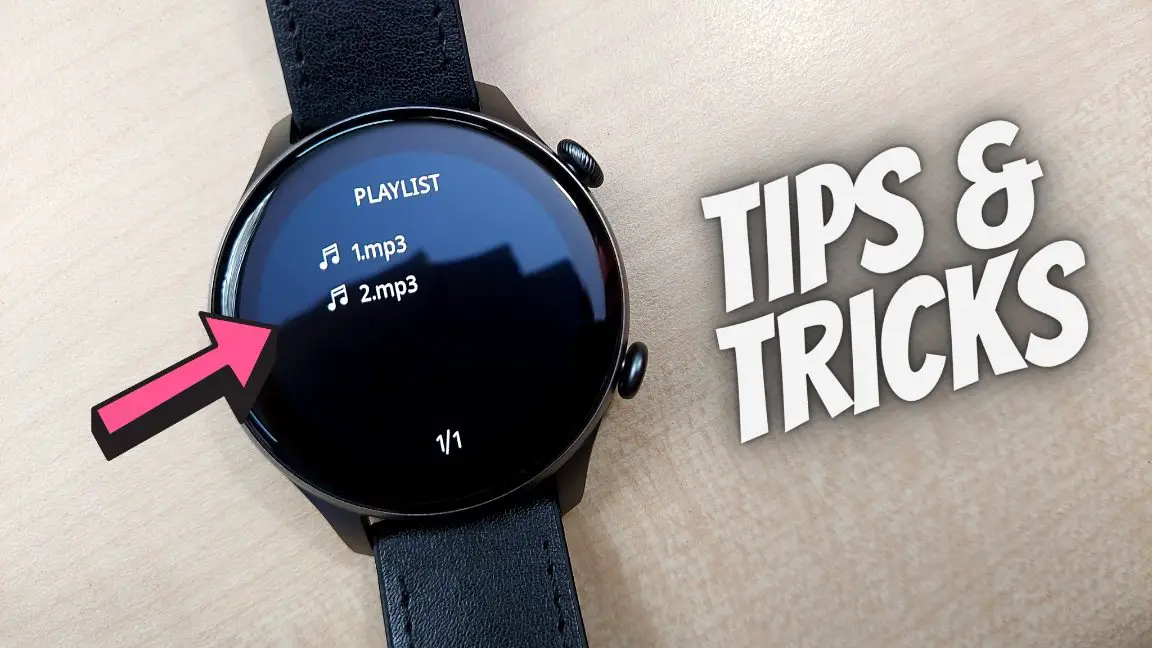Like smartphones, smartwatches come with different screens like AMOLED, LCD, Transflective LCD, E-Ink, and other displays. Since the display is what you interact with the most on a watch, it may make or break your overall user experience. Therefore, in this article, let’s look at different types of displays available for a smartwatch with their pros and cons. Besides, we’ll also see how to check if a watch’s screen is good or not before buying one.
Related | 3 Ways to Check if Smartwatch Temperature Sensor Is Fake or Real
Different Types of Display Available for Smartwatch
Smartwatches available in the market will likely have one of the following displays- AMOLED, LCD (and its types), or E-Ink. The manufacturer decides the same based on the watch’s target use, audience, and, more importantly, the price.
Let us see each smartwatch display type, their working, and the advantages and disadvantages below.
1. AMOLED Display in Smartwatches
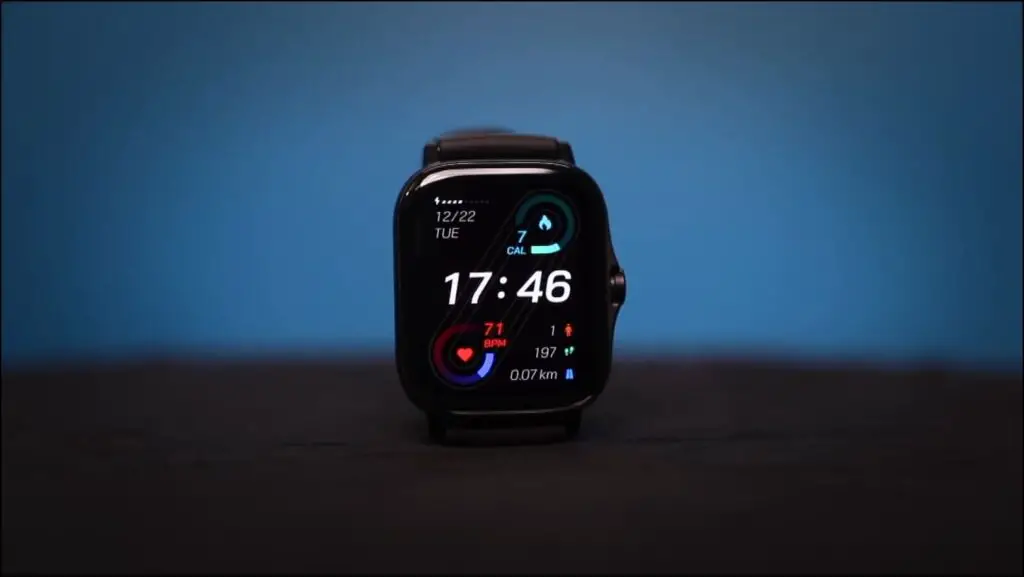
AMOLED or active-matrix organic light-emitting diode display comprises a small layer of organic polymers that light up when charged with current. It doesn’t need a separate backlight and is thinner and more flexible. Plus, it can produce deep blacks by turning off individual pixels.
On smartwatches with AMOLED displays, you’ll generally experience punchy and vivid colors along with a high contrast ratio and wide viewing angles. Also, since black colors require almost nill power, it’s pretty power-efficient than a traditional LCD.
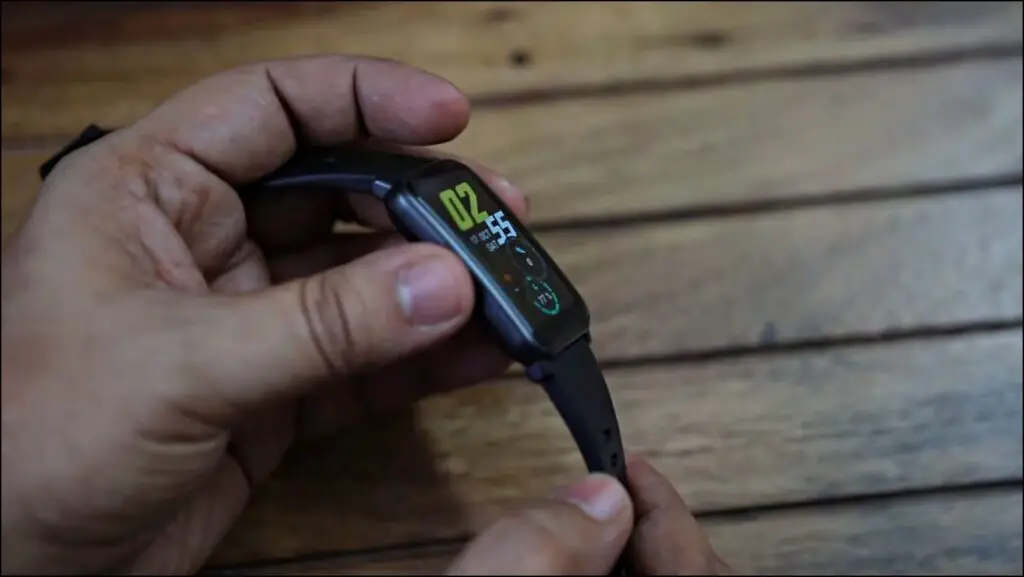
The display’s flexibility and power efficiency with black allows for always-on mode and curved screens. The only problem is that the organic materials are prone to degradation over time and may cause fading, decreased brightness, or image burn-ins.
Pros of AMOLED Display:
- Thin and Flexible
- Saturated Colors and High Contrast Ratio
- Smooth and Fast Touch Response
- Battery Efficient With Black Colors
- Supports Always-On Display
Cons of AMOLED Display:
- May Degrade Over Time
- Expensive to Produce
Virtually all high-end smartwatches come with AMOLED. Samsung uses Super AMOLED screens with an integrated touch sensor and screen on the Galaxy Watch. Whereas Apple uses an Always-On Retina LTPO OLED display on the Watch Series 7. Lately, some budget smartwatches have also started offering AMOLED screens.
2. LCD in Smartwatches
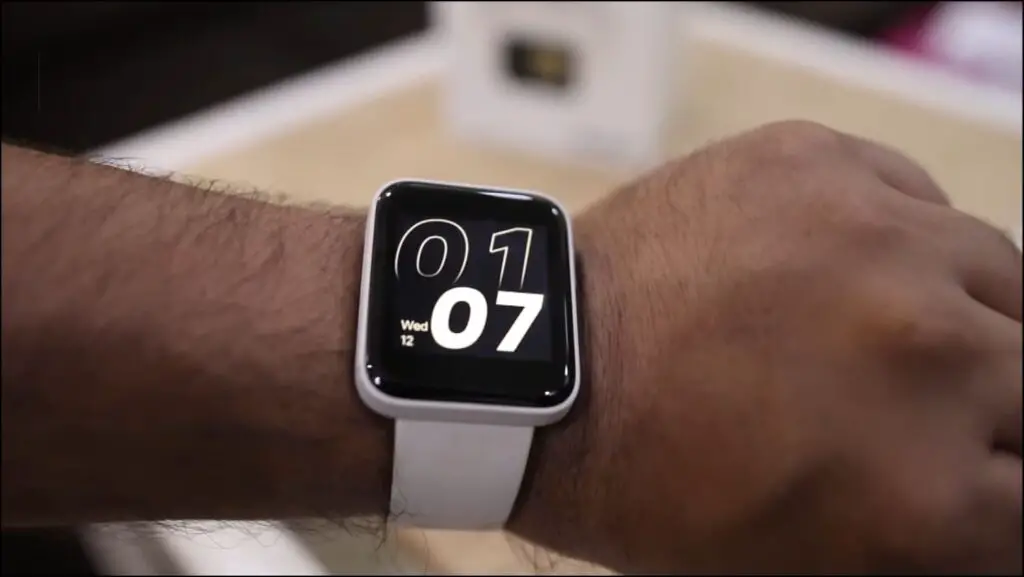
LCD or Liquid Crystal Display is the most common type of display used in smartwatches. It refers to an array of liquid crystals powered by a backlight to project elements on the screen.
This type of display generally costs cheaper to the manufacturers, which is why it’s used on most budget smartphones and smartwatches.
The LCDs are generally bright enough to be seen in direct sunlight as they have a separate backlight. But, the colors and text shown are not as saturated as the AMOLED panel. Also, the touch latency may vary across the panels.
Smartwatches with LCD usually have a higher battery consumption. For the same reason, manufacturers generally don’t give always-on mode on watches having LCD screens.
IPS (in-plane switching) is currently the most advanced and popular type of liquid crystal display.
Pros of LCD Display:
- Generally Brighter Outdoors
- Cheap to Produce
- Easy Implementation and Projection
Cons of LCD Display:
- Not the Best, Visually
- Battery Drain
- Does Not Support Always-on
Most smartwatch manufacturers in the budget range use LCD displays due to their wide usability and cheap cost. This helps make room for other features while keeping the price in control.
3. TFT LCD in Smartwatches

TFT is a type of LCD that stands for Thin Film Transistor and is commonly found in entry-level smartwatches. These screens can hold back some pixels while using other pixels to save more energy.
TFT as an Active Matrix LCD means each pixel is individually embedded in the transistors and capacitors. This allows it to control the working of pixels individually according to projection.
The main advantage of a TFT display is the low manufacturing cost that allows the manufacturers to use this display for cost-cutting, which results in more affordability of the final product, i.e., smartwatch.
TFT is old technology. The newer IPS LCDs, being more advanced, have better visual clarity viewing angles and are relatively more energy efficient.
Pros of TFT Display:
- Available for Cheap
Cons of TFT Display:
- Inferior to IPS displays
- Low Viewing Angles
- Inaccurate Colors and Less Clarity in General
This is a cheaper display technology mainly used in generic or budget-oriented smartwatches. Brands prefer IPS LCDs because of the consistent behavior and advantages it offers.
4. Transflective LCD in Smartwatches
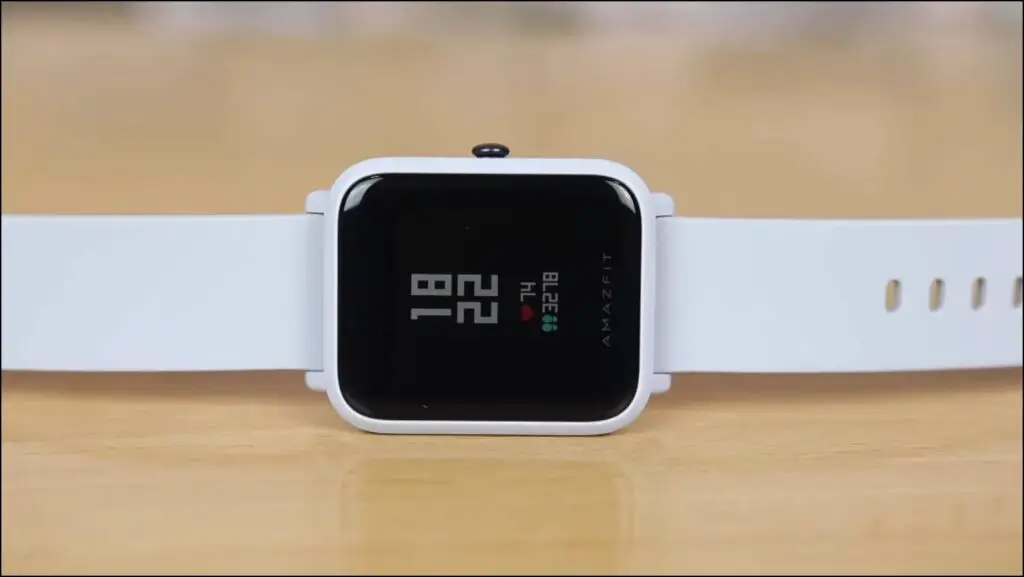
Transflective is also an LCD display that uses both transmissive and reflective panels. It uses a backlight as in the transmissive panel but also uses the reflective panel to pass through the light on the screen.
When the transflective LCD comes in contact with the sunlight, it reflects the same amount of light on the display. Along with that, it automatically adjusts the backlighting according to the level of light shining on it.
In simple words, the brighter the environment you are in, the brighter will be the watch’s screen. This makes it an excellent choice for outdoor usage. Plus, they’re extremely energy efficient when used without a backlight and support always-on mode.
However, the overall colors and contrast can be off when using the onboard backlight indoors. Hence, these screens don’t look as good in indoor environments.
Pros of Transflective Display:
- Great Visibility Under Direct Sun
- Extremely Power Efficient
- Always-On
- Inexpensive
Cons of Transflective Display:
- Bad Contrast Indoors
- Color Shift Problem
While brands primarily avoid transflective LCDs, you may find them on smartwatches designed to last long on a single charge and focused on outdoor use like sports, hiking, and trekking. Amazfit Bip and Pace are some popular examples.
5. E-Ink Display in Smartwatches
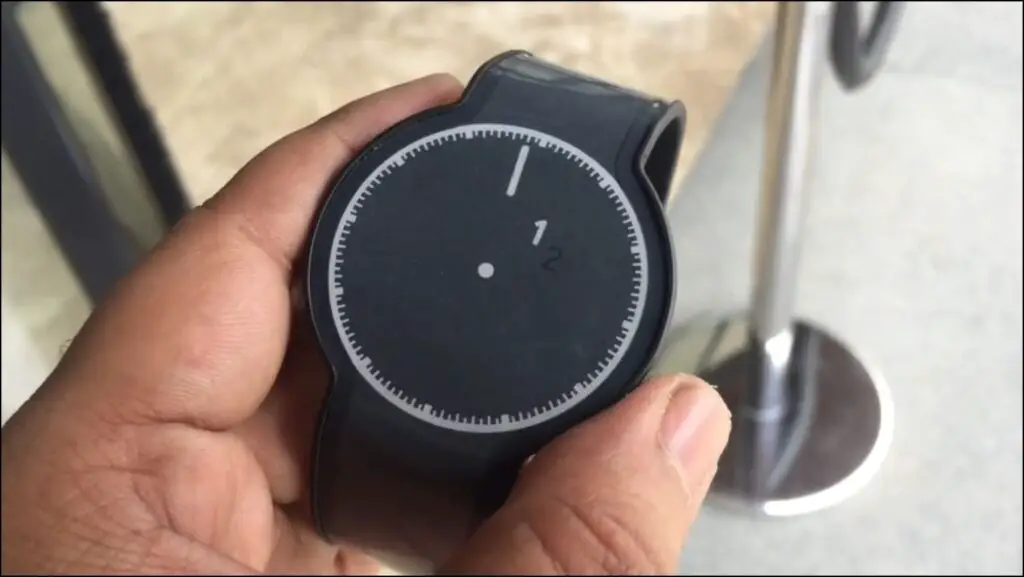
An E-Ink display is a black and white display, also known as an e-paper display. This display is not popular among smartwatches as it is generally used in digital and rugged watches.
The E-Ink screen does not have any backlight to show the interface. Instead, it uses the ambient light reflected from the surface of the display to project the image. Like any reflective display, it also adjusts the brightness according to the amount of light reflecting on it.
The e-ink technology uses tiny microcapsules suspended in a liquid that is encased within a film layer. These microcapsules contain positively charged white and negatively charged black particles. The watch uses an electric field to move these particles and show monochromatic information on the screen.
The display consumes very little power and battery compared to LCD or AMOLED displays. Because of this, devices with E-Ink displays such as Amazon Kindle can last for weeks without recharging. Also, the E-Ink display doesn’t put any stress or strain on your eyes as no blue light comes from it.
In 2016, E Ink Corporation announced Advanced Color ePaper (ACEP), which can display colors. This means we may soon see colorful E-Ink displays, bringing a new slew of products to the market.
Pros of E-Ink Display:
- Cheap to Produce
- No Stress or Strain on Eyes
- Sharp and Clear Text
- Insane Battery Life
Cons of E-Ink Display:
- Only Black & White Display
- No Colors Available (Coming in Future)
The E-Ink display has its advantages and disadvantages. Although it is more battery efficient, it cannot produce colored content and is not much brighter. You will find it on basic or hybrid smartwatches like Fossil Hybrid HR and Skagen Hybrid HR Jorn.
Which Smartwatch Display Type is Best For You?

Each type of display mentioned above has different use cases, advantages, and limitations. If you want the best-in-class display with punchy colors and deep blacks, then AMOLEDs are the best. While buying expensive smartwatches, one should always prefer OLED screens.
When buying a budget smartwatch, you may get an LCD. Some watches may offer AMOLED, but you need to compare the overall features and if the one with LCD brings anything extra to the table by cutting costs on the screen.
Lastly, Transflective LCDs are the best if you’re someone who loves going on outdoor adventures. You’ll get all the smartwatch features alongside an always-on super bright display and excellent battery life.
While E-Ink displays are rare on smartwatches, you can opt for them when looking for a hybrid smartwatch. It would suit people who don’t need fancy features and prefer something that could go on for weeks without charging.
Bonus- Check Reality Of Smartwatch Display Before Buying
A smartwatch with an AMOLED display doesn’t necessarily mean it’s a good panel. Besides the display technology, you need to check other factors and how it looks and feels in the real world.

- Bezels: Most smartwatch listings on e-commerce platforms will show you shiny renders with thin bezels. However, in reality, the watch may have thick bezels around the screen which gives it a cheap feel. Look for real-life images and videos posted by users to confirm.
- Brightness: Brightness plays an important role in outdoor visibility. So, make sure to check the maximum brightness of the watch’s screen, usually mentioned in Lux or Nits.
- Sharpness: The resolution and pixel density determine the screen’s visual clarity. While the small screens on the watch don’t need HD displays, you should check if it looks pixelated in real life.
- Colors and Viewing Angles: Again, colors and viewing angles affect the overall visual experience. If the watch’s screen has bad viewing angles, the screen will appear dark or faded when looked at from the sides.
- Smoothness: This has more to do with the touch latency and refresh rate of the screen. Some generic brands use cheaper quality screens which may appear jittery when you scroll or navigate through the UI.
Wrapping Up
This was all you need to know about smartwatch displays. The technology behind each type of display is different, and the use cases are also different. We always prefer watches with AMOLED screens, especially in the premium segment. Anyways, which smartwatch display type do you find to be the best for you? Let us know via comments.
